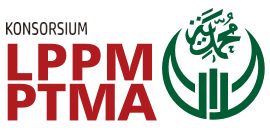The Easiness in silico Drug Development against SARS-CoV-2 Protease using JAMDA
DOI:
https://doi.org/10.53017/ujhs.172Keywords:
JAMDA, In Silico, Drug Development, Molecular DockingAbstract
Drug development can be accelerated and facilitated through the method of in silico by utilising a browser-based application. Universität Hamburg through the ZBH Centre for Bioinformatics has been giving full access to its applications until now. One of them is JAMDA. Forty-five flavonoids have been used as case studies of ligand binding affinity screening for five SARS-CoV-2 proteases. The 3D conformations of ligands and proteins were downloaded from the PubChem and RCSB databases, respectively. OpenBabel was used to combine multiple ligands to speed up the computation. It took at least 7.5 hours to complete the whole process using a single browser tab. Molecules of GC376 non-sulphonate, R8H, and 6”-O-acetylastragalin have top best scores than all investigated ligands. Their average scores ratio is 1.239, 1.234 and 1.188 respectively. PLIP predictions indicate that water molecules are actively involved in protein ligand interactions for four crystals of native and 6”-O-acetylstragalin on several proteins. This browser-based application is fast and easy to use but it is not recommended to use for novel compounds due to data privacy which is not guaranteed by the owner.
Downloads
References
A. S. Rifaioglu, H. Atas, M. J. Martin, R. Cetin-Atalay, V. Atalay, and T. Do?an, “Recent applications of deep learning and machine intelligence on in silico drug discovery: methods, tools and databases,” Briefings in bioinformatics, vol. 20, no. 5, pp. 1878–1912, 2019.
B. Shaker, S. Ahmad, J. Lee, C. Jung, and D. Na, “In silico methods and tools for drug discovery,” Computers in biology and medicine, vol. 137, p. 104851, 2021.
S. Ekins, J. Mestres, and B. Testa, “In silico pharmacology for drug discovery: methods for virtual ligand screening and profiling,” British journal of pharmacology, vol. 152, no. 1, pp. 9–20, 2007.
Q. Zhang et al., “Molecular mechanism of interaction between SARS-CoV-2 and host cells and interventional therapy,” Signal transduction and targeted therapy, vol. 6, no. 1, pp. 1–19, 2021.
X. Ni et al., “Structural insights into plasticity and discovery of remdesivir metabolite GS-441524 binding in SARS-CoV-2 macrodomain,” ACS medicinal chemistry letters, vol. 12, no. 4, pp. 603–609, 2021.
D. D. Nguyen, K. Gao, J. Chen, R. Wang, and G.-W. Wei, “Unveiling the molecular mechanism of SARS-CoV-2 main protease inhibition from 137 crystal structures using algebraic topology and deep learning,” Chemical science, vol. 11, no. 44, pp. 12036–12046, 2020.
M. A. Redhead et al., “Bispecific repurposed medicines targeting the viral and immunological arms of COVID-19,” Scientific reports, vol. 11, no. 1, pp. 1–14, 2021.
Downloads
Published
How to Cite
Issue
Section
License
Copyright (c) 2022 Broto Santoso, Ratna Yuliani

This work is licensed under a Creative Commons Attribution-NonCommercial 4.0 International License.





